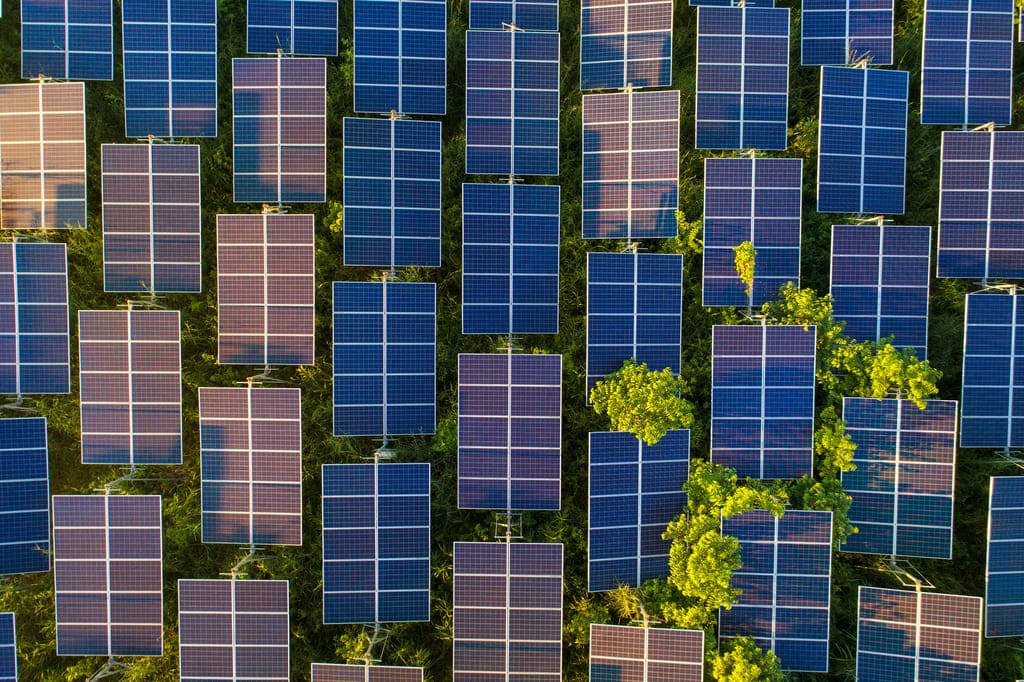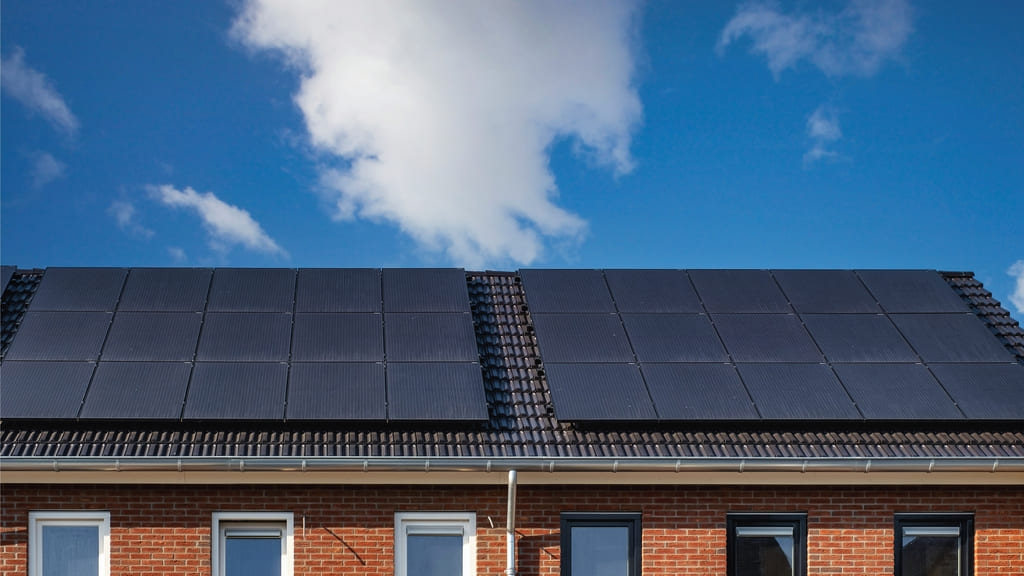The 2024 Solar Saga represents a pivotal moment in the evolution of energy storage and its intersection with solar energy. As we delve into the intricate web of energy storage technologies, challenges, and future trends, it is essential to unravel the potential impacts and applications in the upcoming solar saga.
From the different types of energy storage to the limitations and environmental considerations, this article aims to provide a comprehensive overview of the energy storage landscape in the context of the 2024 Solar Saga. We will explore the predicted trends, including the increased use of renewable energy sources, advancements in battery technology, and the integration of artificial intelligence and predictive analytics. We will delve into the potential applications of energy storage, ranging from residential systems to utility-scale projects. Join us as we unravel the next wave of energy storage and predictive insights in the 2024 Solar Saga.
Key Takeaways:
- 2024 Solar Saga will see increased use of renewable energy sources and advancements in battery technology.
- Integration of artificial intelligence and predictive analytics will play a crucial role in energy storage for 2024.
- Combining energy storage with solar energy offers numerous benefits, but challenges in integration remain to be addressed.
What Is the 2024 Solar Saga?
The 2024 Solar Saga represents a pivotal chapter in the evolution of solar power and its integration into the global energy market, marked by unprecedented growth, technological advancements, and the upcoming Solar & Energy Storage Summit 2024.
As the solar industry continues to experience exponential growth, it has become a driving force in the transition towards sustainable and renewable energy sources. The projected expansion of solar power installations worldwide is set to transform the energy landscape, offering clean and reliable alternatives to traditional fossil fuels. With innovative technological advancements in solar photovoltaic panels, energy storage solutions, and grid integration, the solar sector is poised to revolutionize the way we generate and consume electricity.
Anticipation surrounding the Solar & Energy Storage Summit 2024 is palpable, as industry leaders, policymakers, and innovators converge to explore the latest developments and opportunities in solar and energy storage. This highly anticipated event promises to showcase groundbreaking initiatives and foster strategic collaborations that will shape the future of the solar industry and its role in the global energy transition.
What Is Energy Storage?
Energy storage encompasses the ability to capture and store energy, allowing for its efficient utilization and distribution across various sectors, including the expanding domain of solar power and its role in asserting energy dominance.
What Are the Different Types of Energy Storage?
Various types of energy storage systems exist, including battery-based solutions, renewable energy integration, and UL-approved batteries designed to enhance the efficiency and sustainability of solar power.
In terms of battery-based solutions, lithium-ion batteries are increasingly popular due to their high energy density, long cycle life, and quick response times. They are well-suited for solar power systems, offering reliable energy storage for both residential and commercial applications.
Another option for energy storage is the integration of renewable sources such as wind and hydropower, which can be stored using various methods like pumped hydro storage or compressed air energy storage.
The use of UL-approved batteries ensures compliance with strict safety and performance standards, providing peace of mind for users and promoting wider adoption of solar power and renewable energy integration.
What Are the Current Challenges in Energy Storage?
The current landscape of energy storage presents challenges related to traditional methods, technological limitations, and the need for incentivizing solar power integration, highlighting the industry’s pursuit of innovative solutions and advancements.
What Are the Limitations of Traditional Energy Storage Methods?
Traditional energy storage methods face limitations in terms of solar power integration, management, and technological adaptability, driving the industry’s quest for innovative solutions and enhanced management practices.
These limitations hinder the seamless integration of solar power into the energy grid, creating challenges in balancing the fluctuating supply and demand. Conventional methods such as lead-acid batteries struggle to efficiently store and deliver the energy generated from solar panels. Their limited lifespan and slow response to fluctuations in energy production hinder the overall efficiency of solar power systems. The traditional management and maintenance requirements also add complexity and cost to solar power installations, prompting the exploration of more advanced and flexible energy storage solutions.
What Are the Environmental Impacts of Energy Storage?
Energy storage systems have environmental impacts, which can be mitigated through the advantages of solar power, improved accessibility, and innovations such as Heat pump HVAC systems designed to enhance energy efficiency.
When energy storage systems are not properly managed, they can lead to environmental concerns such as land use and water depletion. The integration of solar power provides a sustainable solution by reducing greenhouse gas emissions and dependence on non-renewable resources. Enhancing accessibility to energy storage technologies ensures its widespread adoption and promotes energy independence.
What Are the Predicted Trends in Energy Storage for 2024 Solar Saga?
The 2024 Solar Saga is anticipated to witness notable trends in energy storage, including the proliferation of solar energy innovations, market projections, and transformative trends shaping the future of solar power and its integration with energy storage solutions.
Increased Use of Renewable Energy Sources
The 2024 Solar Saga is expected to witness an increased utilization of renewable energy sources, including the expansion of solar capacity and installations, contributing to the dynamic landscape of energy storage integration.
As the global shift towards sustainability gains momentum, the focus on harnessing solar power is becoming a crucial aspect of energy transition. The surge in solar capacity and installations is poised to play a pivotal role in meeting the rising energy demands while reducing reliance on fossil fuels. This anticipated growth in solar energy aligns with industry projections and government initiatives aimed at promoting clean energy adoption.
The integration of renewable sources like solar energy into the electricity grid is expected to drive advancements in energy storage technologies. The enhanced battery systems and storage infrastructure will enable better management of fluctuations in solar power generation while ensuring consistent and reliable supply.
Advancements in Battery Technology
The forthcoming period is poised for significant advancements in battery technology, driven by innovations in solar technology, companies like Enphase, and the emerging role of Virtual Power Plants (VPPs) in energy storage integration.
As solar technology continues to make strides in efficiency and cost-effectiveness, it is expected to catalyze improvements in battery technology. Companies such as Enphase are at the forefront of integrating solar and battery systems, harnessing their synergy to optimize energy storage and distribution.
The evolving landscape of Virtual Power Plants (VPPs) presents an opportunity for centralized control of distributed energy resources, thereby enhancing the scalability and flexibility of battery storage systems. These technological advancements are set to revolutionize the energy storage sector, paving the way for a more sustainable and resilient energy infrastructure.
Integration of Artificial Intelligence and Predictive Analytics
The integration of Artificial Intelligence (AI) and Predictive Analytics is set to revolutionize energy storage, particularly in the solar energy domain, leveraging the expertise of industry leaders like Tesla, and initiatives by organizations such as the U.S. Department of Energy (DOE).
AI and Predictive Analytics offer unparalleled capabilities in optimizing energy storage systems, enhancing efficiency, and improving overall performance. By utilizing advanced algorithms and data analysis, these technologies give the power to the seamless monitoring and management of solar energy storage, enabling smarter decision-making and resource utilization.
Industry giants like Tesla have been at the forefront of harnessing AI and Predictive Analytics to refine their energy storage solutions, shaping the landscape of sustainable energy practices. Their innovative approaches and strategic investments demonstrate the profound impact of integrating cutting-edge technologies in the pursuit of renewable energy development and management.
Organizations such as the U.S. Department of Energy (DOE) have recognized the pivotal role of AI and Predictive Analytics in shaping the future of energy storage. Through collaborative efforts and research initiatives, the DOE is fostering the application of these technologies to advance solar energy storage, paving the way for enhanced reliability and cost-efficiency in renewable energy systems.
How Will Energy Storage Impact Solar Energy?
The integration of energy storage will significantly impact the dominance of solar energy, further advancing its technology, and enabling innovative solutions that enhance its sustainable and accessible nature.
What Are the Benefits of Combining Energy Storage with Solar Energy?
The combination of energy storage and solar energy presents numerous benefits, including enhanced solar power advantages, strengthened dominance, and the potential for incentivizing solar power integration into diverse sectors.
Integrating energy storage with solar energy contributes to the stability and reliability of the solar power systems. By storing excess energy during peak sunlight hours, it enables consistent power supply during periods of low solar intensity or at night, addressing the intermittent nature of solar energy. This integration results in reduced dependency on the grid, leading to cost savings and environmental benefits.
The collective advantages of energy storage and solar energy include:
- Increased energy independence
- Grid resilience
- The ability to support critical infrastructure during power outages
This enhanced self-sufficiency and resilience are particularly valuable in remote or off-grid locations, where conventional power sources may be limited or unreliable.
What Are the Challenges in Integrating Energy Storage with Solar Energy?
The integration of energy storage with solar energy encounters challenges related to seamless integration, effective management, and technological adaptability, necessitating strategic solutions to overcome these obstacles.
Efficiently integrating energy storage with solar energy requires overcoming the disparities in energy production and consumption. This demands effective management to synchronize the fluctuating solar energy output with storage and discharge levels. Ensuring technological adaptability is crucial to support the evolving solar energy technologies and storage solutions. New advancements, such as smart inverters and advanced metering infrastructure, play a pivotal role in this integrated system. Seamless integration of these technologies is essential for maximizing the benefits and reliability of solar energy storage.
What Are the Potential Applications of Energy Storage in the 2024 Solar Saga?
The 2024 Solar Saga offers a diverse array of potential applications for energy storage, encompassing residential systems, commercial and industrial utilization, and extensive utility-scale projects that redefine the landscape of solar power integration.
Residential Energy Storage Systems
Residential solar energy storage systems are poised to revolutionize the accessibility and utilization of solar power, offering homeowners unprecedented control over their energy consumption and contributing to enhanced accessibility of solar technology.
These systems, equipped with advanced technological advancements, are changing the landscape of renewable energy by enabling efficient storage of excess energy generated by solar panels. This translates to greater independence from the traditional grid systems and reduced reliance on non-renewable resources. Their capacity to store and release energy at optimal times is give the power toing users to make informed decisions about energy usage and cost savings.
Commercial and Industrial Applications
Commercial and industrial sectors stand to benefit from the extensive applications of energy storage, integrating solar installations and projects to enhance operational efficiency and sustainable energy utilization.
The incorporation of energy storage systems with solar installations can significantly reduce the dependence on the grid, especially during peak demand periods. This can lead to lower operating costs for businesses, as well as providing a more reliable and consistent power supply. The pairing of energy storage with solar energy allows for greater flexibility in managing energy consumption and can help mitigate the intermittency of renewable energy sources.
Utility-Scale Energy Storage Projects
Utility-scale energy storage projects represent an essential component of solar energy sustainability, offering robust solutions for large-scale energy distribution, grid stability, and the seamless integration of solar power across diverse terrains.
The significance of utility-scale energy storage projects cannot be overstated in facilitating the widespread utilization of solar energy. By providing storage capabilities, these projects enable the harnessing of solar power during peak production hours and efficient distribution during off-peak periods, ensuring a consistent and reliable energy supply. They play a vital role in stabilizing the grid, reducing the impact of fluctuating solar energy production and enhancing the overall sustainability of the energy ecosystem. Through their deployment, the transition towards greater reliance on renewable energy sources is significantly enhanced, ushering in a cleaner and more efficient energy landscape.
Frequently Asked Questions
What is the significance of the 2024 Solar Saga?
The 2024 Solar Saga is a major event in the energy industry that will unveil the next wave of energy storage solutions and predictive insights for solar power.
What can we expect from the 2024 Solar Saga?
The 2024 Solar Saga will showcase innovative technologies and advancements in solar energy storage and predictive analytics, providing insights into the future of renewable energy.
Who will be attending the 2024 Solar Saga?
The 2024 Solar Saga will bring together industry leaders, researchers, and investors from around the world who are interested in the latest developments in solar energy storage and predictive insights.
What are some of the topics that will be covered at the 2024 Solar Saga?
The 2024 Solar Saga will cover a wide range of topics including new energy storage technologies, data analysis and predictive modeling, and the role of solar energy in the future of sustainable energy.
Why is energy storage important for solar power?
Energy storage is crucial for solar power because it allows for the capture and storage of excess energy generated by solar panels, which can then be used during times of high demand or when sunlight is not available.
How can I attend the 2024 Solar Saga?
Tickets and registration for the 2024 Solar Saga will be available online closer to the event date. Keep an eye out for updates and announcements on our website and social media channels.


